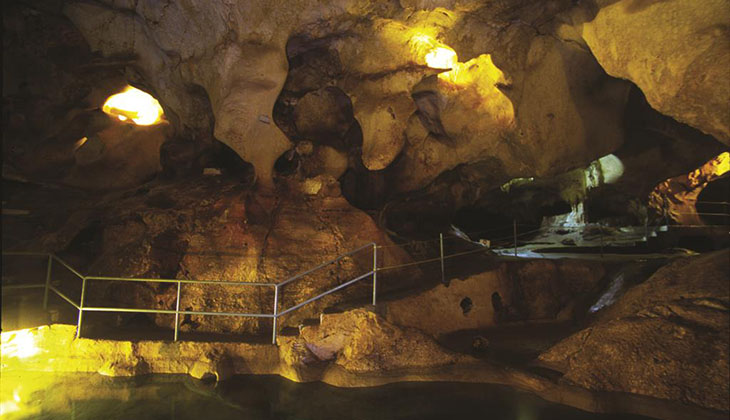The natural caves of Málaga Province have attracted the inhabitants of the coastal area since the dawn of time. In the Neolithic age, the men living in what would later become Málaga used to get into the caves for shelter and for their strategic location. Cave men would draw symbols on the walls and would perform mysterious rituals in the caves.
Today, these caves have anthropological, historical, geological and environmental importance. Looking inside, we can imagine how people used to live thousands of years ago. And we realise the wonders Nature can do and what the consequences of the inexorable, slow passing of time can be.
In the Costa del Sol, there are three relevant Neolithic sites. They are conveniently protected by caverns: the Cave of La Pileta, in Benaoján, the Cave of El Tesoro, in Rincón de la Victoria, and the fabulous Caves of Nerja, not far away from Maro. Although it lacks archaeological remains, the Cave of El Gato, is a tourist attraction and a must for those interested in caving or speleology.
Reconstructing history
There is no other cave in the world like those in our province. The Cave of El Tesoro is one of the only three marine caves on Earth. Besides its impressive natural formations where stalactites and stalagmites seem to be dancing an age-old dance, this cave has evidence of early human artistic activity. The cave paintings discovered here are similar to those in the Cave of La Pileta, in Benaoján. The entrance lies high in the hill bearing the same name, and its human creative evidence, whose size, precision and beauty attracts our attention, dates back to the Palaeolithic age. The two caverns are open to the public around the year.
However, it is the Caves of Nerja that can be considered as a major tourist attraction. They were re-discovered in 1959 by a group of local kids. When they got in, they could not believe their eyes. The caves are a genuine scientific and monumental treasure. They have huge chambers softly lit by the natural light that floods in through cracks. There are some paintings that suggest they might be the world's oldest cave art but further study is needed.
The Cave of El Gato
The Cave of El Gato is one of the caverns of the Hundidero-Gato system, an impressive series of subterranean potholes, lakes, halls and siphons covering over 9000n2 whose shapes and features have been carefully studied by topographers. The south entrance, near Benaoján, is worth a visit. At the entrance there is a cascading waterfall that empties into a lake whose extremely cold water is apt for brave bathers only. The charm and beauty of this spot is extraordinary. You can get into the cave only if you are properly trained and equipped. El Gato is one of the so many Mother Nature's creations that are true natural monuments in Málaga Province and the Costa del Sol.








